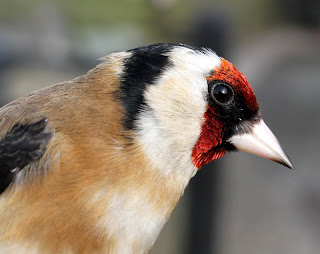After de-icing the car windscreen at -4⁰C again this morning I set off to Rawcliffe Moss not sure what I might do in the way of birding when it’s neither winter nor spring just that nondescript bit in between that’s just a waiting game.
Last week we put up a few niger feeders in the plantation in the hope of attracting more migrant Goldfinch, Siskin and Lesser Redpoll in the weeks ahead. But at first I didn’t much fancy putting up nets with icy fingers using icy poles and icy ropes in an icy landscape.
But when I walked up the centre of the trees a gang of 10 or 12 Chaffinch scattered from the base of one of the keeper’s pheasant feeder, then I heard a Goldfinch or three tinkling about, a Yellowhammer flew over, and then over towards the potato field the Corn Bunting sang from last year’s song post in last year’s territory. So with the sun up I decided to have a net and in between the checks, a wander about, play a watching brief, have a good listen in the quiet that is the middle of the deserted March mosslands.

From my walk of the plantation perimeter I counted 3 Reed Bunting, 4 Blackbird, 7 Goldfinch, 2 Buzzard and hovering Kestrel whilst overhead and in the space of an hour there was minimal visible migration in the form of 3 Pied Wagtail, 2 Lesser Redpoll and 3 Siskin. From the far side of the trees 3 Roe Deer dashed off and several Brown Hare loped away from the shorter grass to longer cover. I watched a Jay flew over, the first I have seen for months, not so the still flocking Woodpigeon with 70 of them flying tightly east.
When I checked the couple of nets the feeders had worked a just little with 3 Goldfinch, a Chaffinch, a Great Tit and a recaptured Blue Tit from last autumn.




Meanwhile the finches that went over didn’t join those on the niger, but I have high hopes for the next few weeks when Redpoll come through in numbers. As the morning warmed Skylarks came into good voice but very soon the wind picked up rendering my previously motionless nets to resemble sails and I hastily packed in. As I left the moss I saw the Little Owl in the lee of the ivy covered tree and usual 4 Stock Dove around another where the ivy hides the cavities.
I just looked at the weather chart and the synopsis for the next four days is not good with westerlies and rain at times. It could be a slightly longer wait for those migrants.







































.jpeg)







.jpg)












